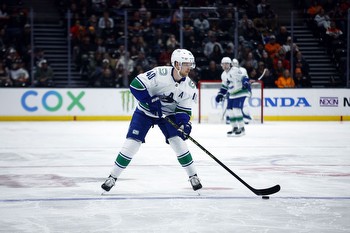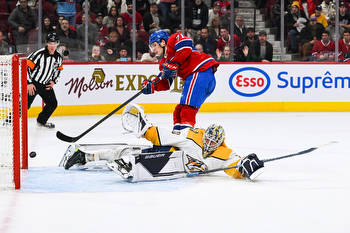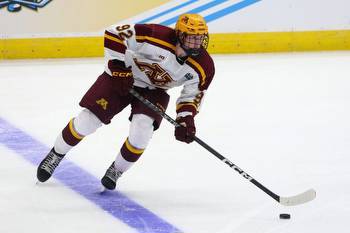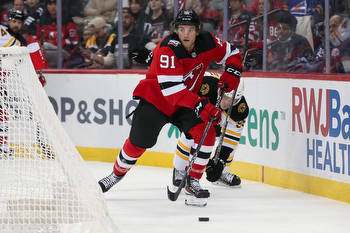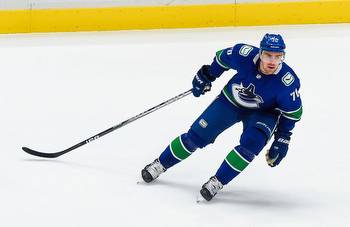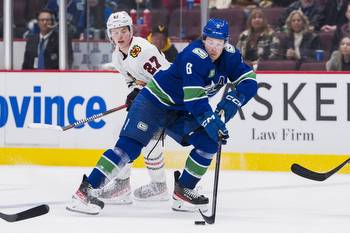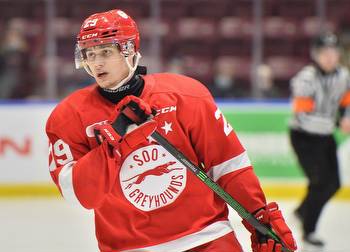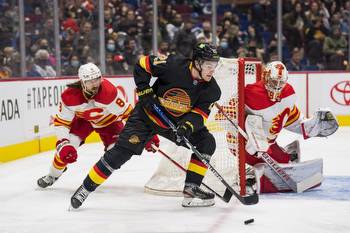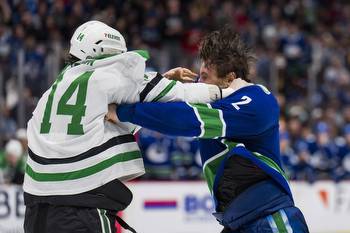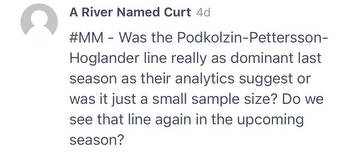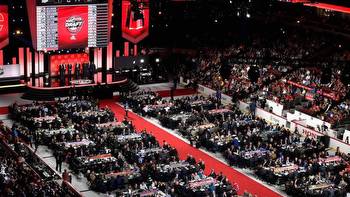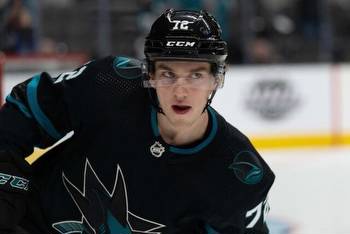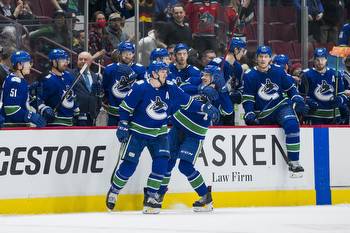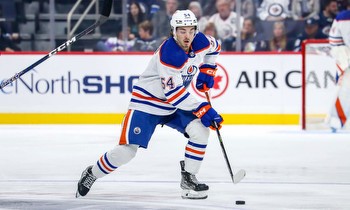Can Canucks’ Vasily Podkolzin still become a top-six stud? Here’s what it would take
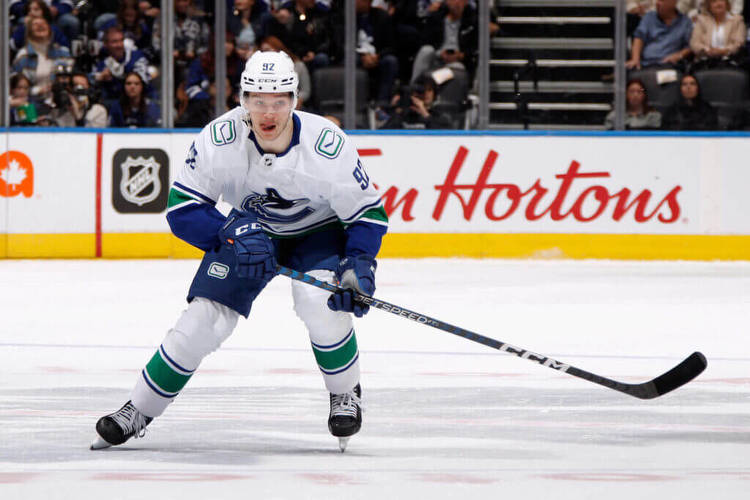
There’s a palpable, exhilarating difference between regular-season and playoff hockey.
After Game 82, there are no more sleepy Sunday snoozers against a team like Anaheim that was actively built to tank for a high draft pick. No more playing an exhausted opponent on the second leg of a back-to-back. No more easy opportunities to pump goals past a club’s struggling backup goaltender. No more games against a team that is sleepwalking down the stretch because they were virtually locked in a playoff spot by the All-Star break.
Teams are rarely amped up at max intensity in the regular season because it’d be impossible to maintain that gruelling style over 82 games.
That changes in mid-April. Sixteen teams begin a desperate, all-out sprint for the Stanley Cup which unlocks a new level of will, camaraderie, determination and mental resilience. There’s a higher price to pay for every puck battle along the boards; every wrestling match to win a rebound and “take a hit to make a play” starts to mean something totally different when every player will take every opportunity to finish a hit on you.
Speed, skill and two-way talent remain paramount — it’s obviously not as simple as the biggest team winning — but playoff hockey is not for the faint of heart. Even if you’re a team built on pace and high-octane offence, you need complementary players who can muck it up in the corners, along the walls and in front of the net. A bigger team might not bully or intimidate you the way they could have 15-20 years ago, but they can certainly still push you to the outside by winning battles and forcing you to play a brand of perimeter hockey that is a recipe for a quick playoff exit.
Watching the glorious, ramped-up intensity of the playoffs so far is a reminder that the Canucks need heavier players who thrive when there’s less open ice. That shines a spotlight on Vasily Podkolzin and the importance of developing him into an impact player. Podkolzin’s size, high motor, two-way conscience and hardness offer promise that he could be an important piece in an NHL postseason environment. He’s already proven he can considerably elevate his game during previous KHL playoffs.
Developing Podkolzin to reach his NHL potential still requires a lot of work, however. The 21-year-old had a solid rookie season where he chipped in with 14 goals and 26 points, but completely stalled as a sophomore, notching just seven points in 39 games. Some forwards drafted shortly after him such as Matt Boldy and Cole Caufield have already emerged as high-end difference-makers so it’s possible to feel a little disappointed in the slow pace of Podkolzin’s development, even though he still has plenty of time to grow.
Podkolzin’s at a fascinating point in his young career; it’s worth revisiting his potential and the odds of him reaching it. One of the ways to do that is to find statistical matches for Podkolzin’s development to this point and examine how the rest of those players’ careers fared. I went back to 2000 to find wingers who met the following criteria:
- Drafted in the first round (we want similarly high-pedigree prospects)
- Scored 0.23-0.33 points per game in NHL during age-20 and 21 seasons, cumulative (Podkolzin has 33 points in 118 career NHL games which is a 0.28 points-per-game rate)
- Minimum 70 NHL games cumulative during the player’s age-20 and 21 seasons
- Minimum 6 feet tall (we want wingers with similar physical attributes as Podkolzin)
This helped us find blue-chip winger prospects who were similar to Podkolzin in physical stature, broke into the NHL around the same age and produced points at a similar rate. We got nine matches for Podkolzin under that criteria.
Right off the bat, it’s encouraging to note that six of them (66.7 percent) went on to become top-nine forwards in the NHL during their prime. Five of the nine total matches hit the 20-goal milestone multiple times in their careers. Only one of those nine forwards went on to become a top-line winger, however, which suggests the ceiling isn’t as high as it was when he was drafted.
In other words, there’s still a good chance Podkolzin can become an impactful top-nine forward, although it’s probably in a middle-six capacity. Most first-round picks that become busts haven’t earned substantial NHL games at a precocious age like Podkolzin has. The simple fact that he’s played over 70 NHL games before the age of 22 bodes well for his odds of taking meaningful steps in his development.
Now, let’s dive deeper into some of the successful comparables and discuss what the most realistic projection of his future is. Before I drop the list, it’s critical to remember that these are statistical comparables and not stylistic. This is still a solid way of identifying prospects who had a similar trajectory and tracking how their careers played out. Here are the six matches that became top-nine forwards.
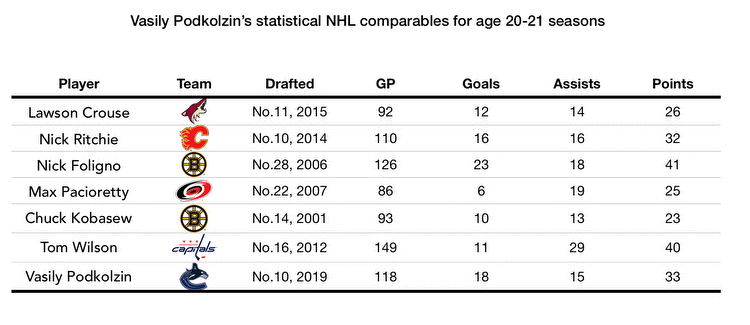
Max Pacioretty, a six-time 30-goal scorer, is the flashiest name among this group. He’s the only player out of Podkolzin’s nine total matches that became a true talent first-line winger, however. Podkolzin probably doesn’t have this type of upside as he lacks the speed and pure offensive instincts that Pacioretty flashed early in his career. Nonetheless, it’s promising to see a player who had a slower development path ultimately reach their peak potential.
Lawson Crouse was drafted No. 11 in 2015 by Florida and dealt to Arizona in the trade that dumped Dave Bolland’s contract. Arizona had to be really patient with Crouse’s development — it wasn’t until his age-24 season that he broke out with 20 goals and 34 points in 65 games last season. He followed that up with a career-high 24 goals and 45 points this season. Crouse would probably be a high-end third-liner on a Cup contender more so than a true top-six talent, but he has a lot of value because of his unique power-forward style.
Nick Ritchie is a heavy, 10-15-goal scorer. It’d be disappointing if this is all Podkolzin can get to, but Ritchie is at least a useful everyday contributor.
Tom Wilson has become an excellent second-line player. Podkolzin obviously doesn’t have the meanness or skating that Wilson possesses, but the latter has scored at a 54-point-per-82-game pace over the last five seasons.
Among the other players, Nick Foligno was a really effective middle-six player in his prime. Chuck Kobasew’s career wasn’t as long, but he notched three 20-goal seasons over 601 career games.
How can the Canucks help Podkolzin reach his ceiling?
The Canucks need to help Podkolzin become more assertive, confident and creative to take the next step offensively. Even when Podkolzin was playing in the KHL, he was fed sparse minutes and had to restrict his game to a very unimaginative, fourth-line grinder role just to earn the trust of his coaches. That’s a mindset the Canucks are trying to get him away from.
“The one thing identified with watching him at the NHL level was he played a really safe game,” Ryan Johnson said on The VANcast last week. “He played not to make a mistake which usually ended up in his feet planting and analyzing and being on the right side of pucks. A main focus of him coming down to Abbotsford was to get him back on his toes, to get him skating, to get him initiating forechecks, not be afraid to anticipate a turnover and take off and create scoring chances that way.
“We didn’t want him to play safe. Safe is death. He started to really embrace that and it turned into now creating offence which I think we have yet to tap into the high side of his scoring abilities. He can shoot the puck harder than anybody and it just, sometimes he’s got to be more selfish with it.
“When you started seeing him move his feet more, driving wide on defencemen and not hesitating to use his shot from anywhere, we started to see a different player (in Abbotsf0rd). I kind of felt at the end of the season in Vancouver, before he was hurt, he was getting back to the safe and not moving his feet.”
An equally crucial piece of the puzzle will be maximizing his defensive game. Podkolzin’s work rate, length, defensive care and disruptiveness have all hinted at a player who should excel as a shutdown winger and on the penalty kill. It isn’t too surprising that there have been some ups and downs in his two-way play so far — offence usually comes first for young players whereas becoming stout defensively often takes a lot of experience.
Nobody’s expecting it to happen overnight, but Vancouver needs to help Podkolzin become a strong defensive player over the long run because a major draw for drafting him was the all-around potential he showed beyond just the point totals.
Valeri Nichushkin’s slow, unique development path is a reminder of how heavy, two-way wingers can take time to reach their ceiling. Nichushkin, who was a No. 10 selection in 2013, didn’t find his footing until his age-24 season with a fresh start in Colorado. He had zero goals and 10 assists in 57 games with Dallas as a 23-year-old but then broke out with 27 points in 63 games, on top of finishing eighth in Selke Trophy voting.
Overall, Podkolzin is unlikely to hit the type of ceiling that Caufield and Boldy have. Only one of his nine statistical comparables turned into a first-line player. There’s still plenty of hope to develop him into a middle-six winger though, with the type of heaviness and two-way utility that shines come playoff time. That would still make him an important piece of the future, and it’s now up to the player and organization to unlock that potential.








